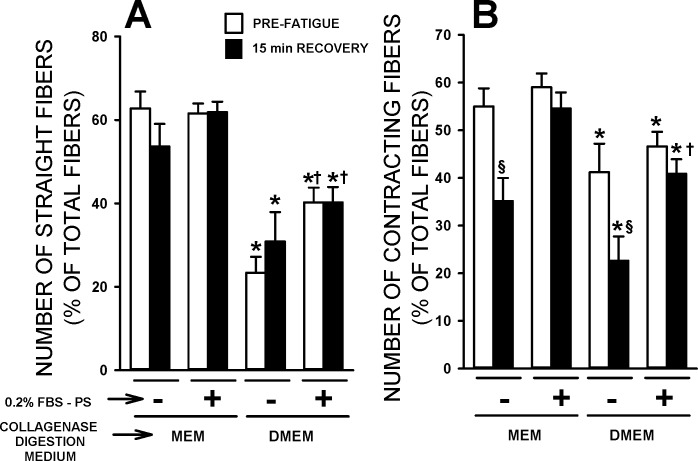Fig. 2.
The collagenase digestion in MEM medium gave rise to a greater number of straight and contracting fibers than in DMEM medium, while the presence of 0.2% FBS in the physiological solution prevented the loss of contracting fibers following fatigue. Flexor digitorum brevis (FDB) fibers were prepared and tested according to protocol 1. Experimental temperature: 37°C. Contracting fibers were counted, while fibers were stimulated with a 200-ms train of 0.3 ms, 10-V pulses at 100 Hz. The numbers of straight fibers (A; as defined in Fig. 1A) and contracting fibers (B) are expressed as a percentage of the total number of fibers present on the coverslip. Prefatigue measurements were performed after a 15-min equilibration period. Fibers were fatigued with one 200-ms-long tetanic contraction every second for 3 min. Measurements were repeated after 15 min of recovery. Vertical bars represent SE of 109–297 fibers from six to eight mice. *Mean value for the DMEM condition was significantly different from the mean value for the MEM condition. §Mean value after 15 min of recovery was significantly different from the prefatigue mean value. †Mean value in 0.2% FBS was significantly different from the mean value in the absence of FBS, using ANOVA and LSD, P < 0.05.

